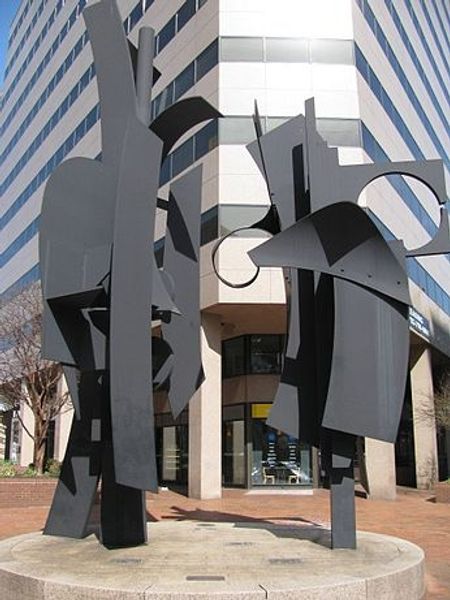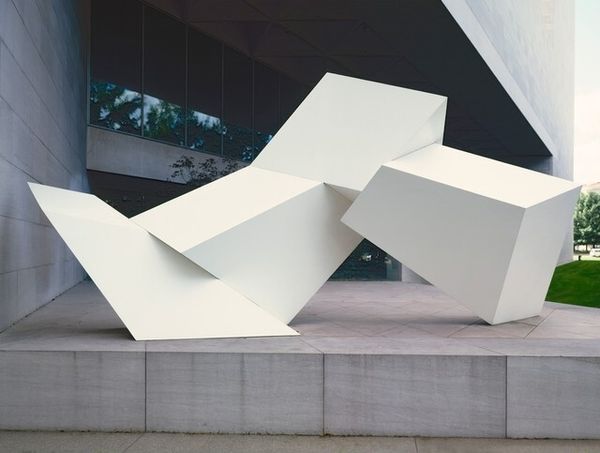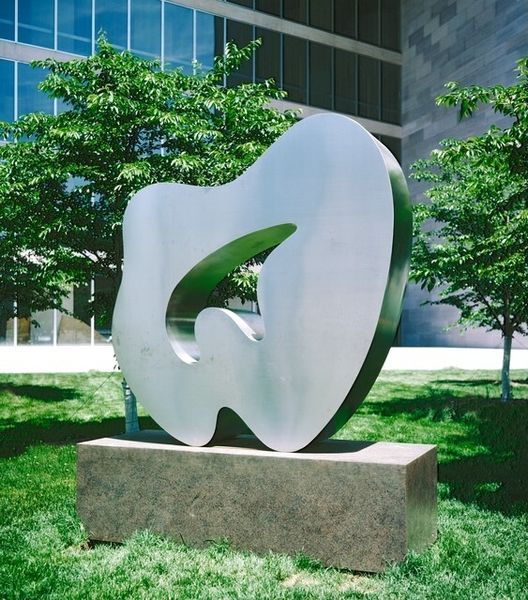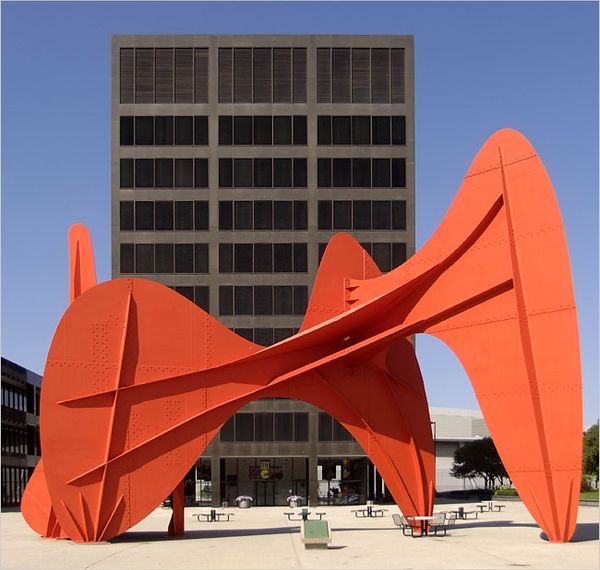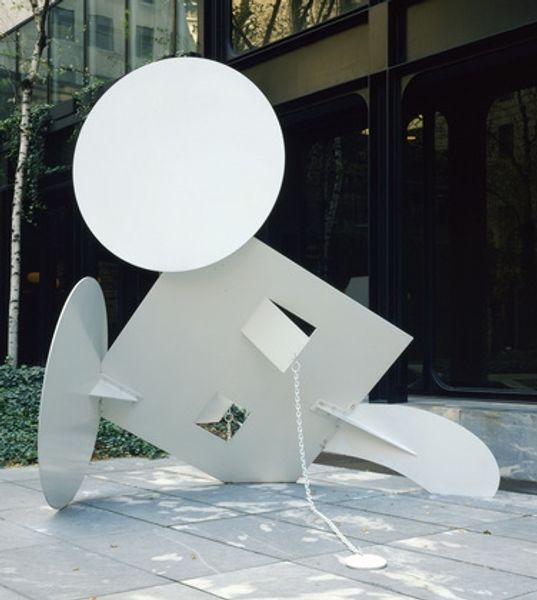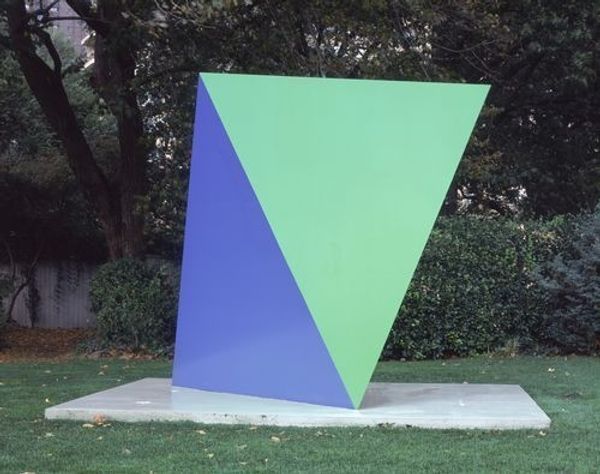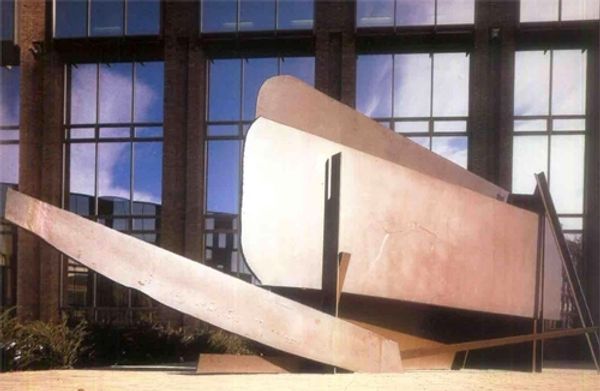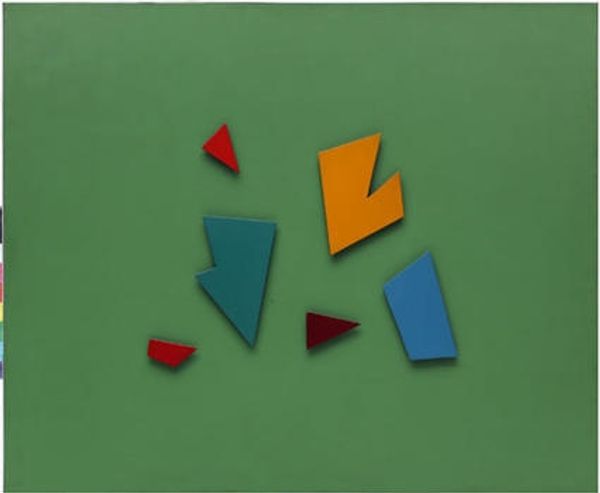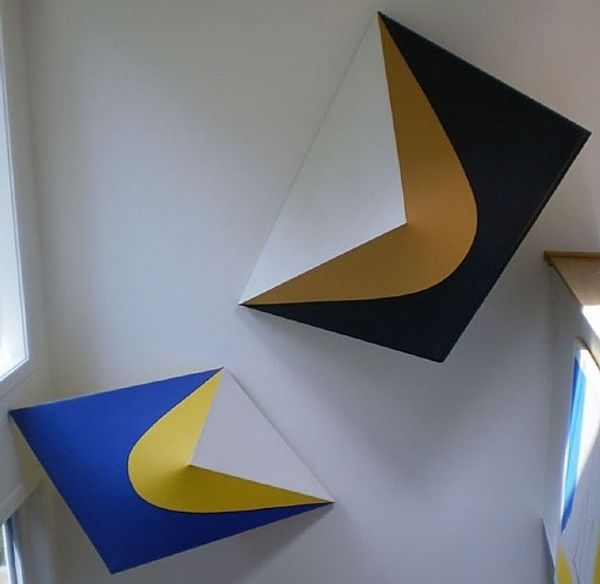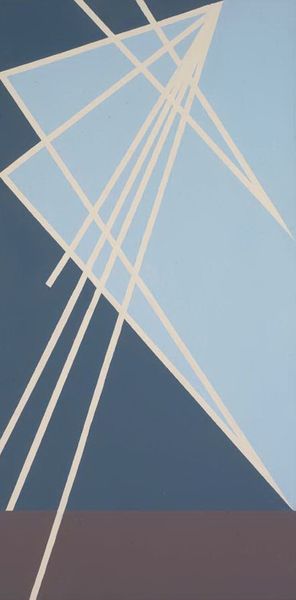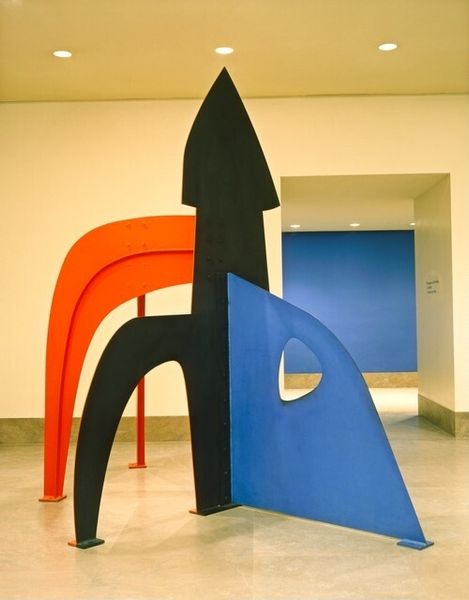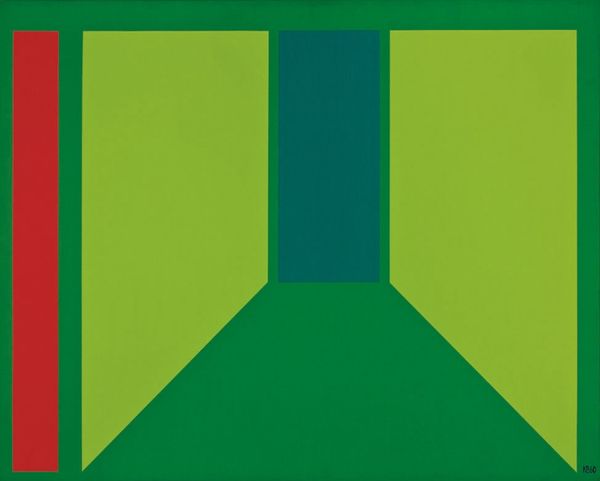
metal, public-art, sculpture, site-specific
#
metal
#
public-art
#
geometric
#
sculpture
#
site-specific
#
abstraction
#
modernism
Copyright: Angelo de Sousa,Fair Use
Curator: Here we have a photograph of "Sculpture in front of Burgo Empreendimento," a piece of public art by Angelo de Sousa. Its abstract, geometric forms certainly command attention against the architectural backdrop. Editor: Yes, and immediately I notice that interplay of sharp, bright green metal contrasting with those flashes of warm red. It has a playful, almost whimsical quality to it, doesn’t it? Curator: Indeed. And thinking about public art in relation to its surroundings, you see this modern sculpture designed specifically for this location, aiming to activate the plaza and create a dialogue with the modernist building behind it. The sculpture really alters how we experience that space. Editor: I agree, it’s the materiality that truly holds my attention. You can practically feel the industrial process, the fabrication of those metal planes, how they were shaped and joined. There’s a rawness to that process that really makes me consider the labor involved in creating it. It has this tension between pristine finish and brutal production. Curator: That interplay is important, isn't it? Think of the shift in the mid-20th century as civic entities invested in making urban spaces more vibrant through works like this. There was optimism around what art could achieve socially, especially in emerging commercial districts. It's a deliberate attempt at cultural placemaking. Editor: Yet, I also see this conversation around accessibility. Is this geometric abstraction welcoming or does it reinforce a sense of exclusion? Does its location imply its appreciation and consumption is mainly destined to the people who occupy the building? Who, ultimately, is this art for? Curator: It's a valid point. Public art is never neutral. Even these supposedly simple shapes inevitably convey certain values and beliefs and signal cultural priorities of whoever commissioned the work and, by extension, what we want to say to our public and to ourselves. Editor: It brings up the entire concept of who gets to determine the aesthetics of public space, the politics inherent in any act of creation. What kind of artistic labor are we even valuing and investing in through decisions such as this one? Curator: Precisely. This dialogue around patronage, intended audience, material presence and geometric reduction reveals the complexity of placing abstract modern art in the public sphere. Editor: Agreed, It has me reconsidering how labor and space impact and are in turn impacted by these large-scale artworks.
Comments
No comments
Be the first to comment and join the conversation on the ultimate creative platform.

